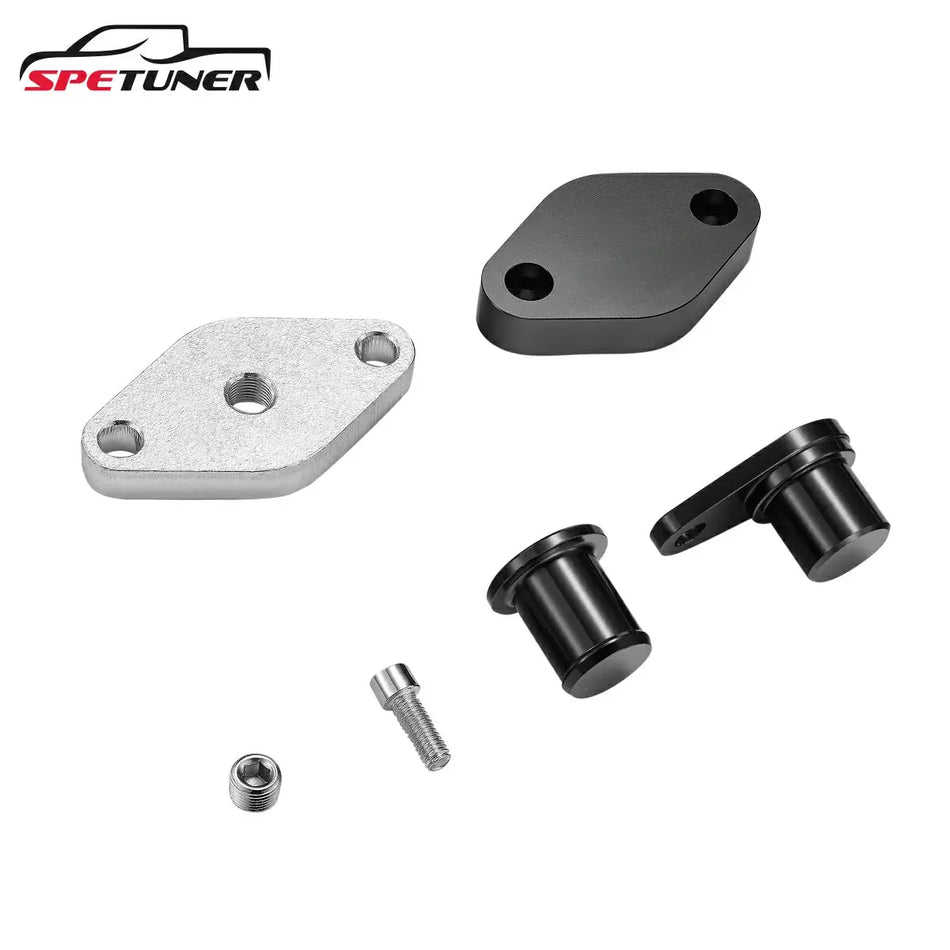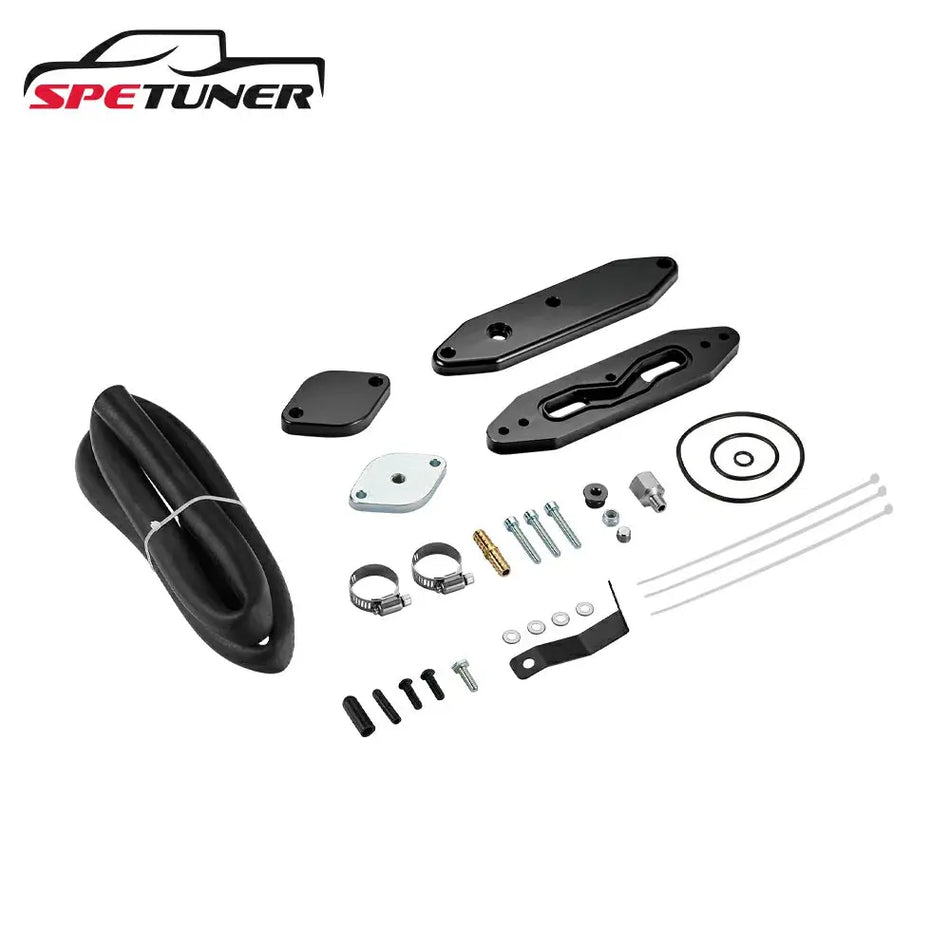Learn the key benefits of EGR delete, from improved engine power to fuel efficiency. Discover how it boosts performance and cuts maintenance costs, with potential risks.
EGR Delete: Unleash the Power You’ve Been Looking For
There’s something almost rebellious in the idea of cutting through the noise of all those emissions regulations and engine restrictions. It feels like you’re taking the reins, bypassing the system that has been limiting your vehicle’s potential for far too long. EGR (Exhaust Gas Recirculation) is one of those systems that tries to control everything for you, keeping emissions in check. But what if you could be the one in control?
EGR is often seen as a necessity for keeping the air clean and passing emissions tests. But for the discerning driver who knows the true power of their engine, it feels more like a shackle. It’s not just about clearing up the air—it’s about freeing your engine, letting it breathe, and pushing it to its maximum.

So, What Is This EGR System Really?
Imagine your engine, humming with potential, but held back by a tiny but important valve. That’s your EGR. This system takes exhaust gases—dirty, used gases—and forces them back into the engine to dilute the air-fuel mixture. The goal is noble: to reduce nitrogen oxide emissions, ensuring that your vehicle complies with stringent environmental regulations.
But the engine you drive is made to roar, to rev, to push beyond what it's been told is "acceptable." EGR is a gatekeeper, imposing limits, reducing the flow, the speed, and the thrill of the ride. So, can the EGR system be removed? Yes — it can be removed for off-road use or in situations where it is legally permitted. Let's break down more details.
What Happens When You Delete Your EGR?
Taking out the diesel delete kit isn’t just an adjustment—it’s a transformation. Your engine will feel it. Gone is the thick, recirculated air. Gone is the sluggishness that comes with a system designed to put the brakes on performance.
But here’s the catch: there’s a price. Not in money, but in emissions. By removing the EGR, you’re breaking free of those controls, but it comes with a cost to the environment.

The Good: Why People Are Doing It
Let’s talk about the power. That’s why you’re here, right? You want more. You crave more. With an EGR delete, you're essentially eliminating restrictions in your engine’s airflow. More air, more power, more fuel efficiency.
Think about the miles you’ll gain per gallon. More power means a more efficient engine. Less carbon buildup means less chance of costly repairs down the road. No more worrying about your DPF choking up and clogging your engine with soot.
And then there’s the maintenance. Over time, the EGR system can cause carbon buildup. The kind that clogs up your engine and creates expensive repairs.
But, Is It All Sunshine and Rainbows? The Risks of EGR Delete
Of course, nothing comes without its consequences. You know that.
And here’s the kicker—it might not be legal. At least not on the streets. Depending on where you live, taking the EGR out could land you in some pretty hot water.
Does Deleting the EGR Really Boost Your Power?
If you’re still on the fence, this is where it gets exciting. The question on everyone’s lips: “Will this give me more power?” Yes. Yes, it will.
You’ll feel it every time you hit the accelerator, each shift smoother, each corner conquered faster.
Legality: The Devil’s in the Details
But here’s the part you can’t ignore: the law. It’s easy to get caught up in the excitement of performance and power.
If you’re thinking about using your vehicle exclusively for off-road adventures, races, or in regions where emissions laws aren’t enforced strictly, then you’ve got a free pass.
How Do You Go About It?
Okay, you’re ready. You’ve made up your mind. You want more power, more freedom for your engine, and you’re prepared to deal with the consequences. So, how do you go about it?
First, it’s not something you should try to do on your own unless you’re experienced with engine work. Removing the EGR involves more than just pulling out a valve; it’s a full process that may require modifications to the ECU (Engine Control Unit) and may even include adding bypass software to ensure that your engine runs smoothly without triggering any warning lights.
But don’t worry, you’re not alone. There are professionals who specialize in this kind of work. They’ll take your ride, unlock its full potential, and leave you with a machine that’s ready to dominate.
Choose the Right EGR Delete Kit
Not all delete kits are created equal. Selecting the right one ensures durability, compatibility, and proper engine fitment. Here are the key factors to compare:
1. Choose a Kit Made for Your Exact Engine
EGR delete kits must match your vehicle’s engine platform (ex: LLY 6.6L Duramax, 6.7 Cummins, 6.0 Powerstroke). Using the wrong kit may cause leaks, engine lights, or poor fit.
2. Material Quality
- Bilateral CNC-machined plates ensure no deformation under heat.
- High-temperature silicone O-rings prevent boost leaks.
- Stainless steel hardware avoids corrosion.
3. ECU Compatibility
A proper delete requires tuning support. Choose kits that:
- Include tune files
- Work with your tuner (MM3, EZ Lynk, HP Tuners, EFI Live)
4. Leak-Free Design
Look for reinforced block-off plates, boost-proof gaskets, and welded coolant reroute fittings.
5. Good Installation Support
The best kits include step-by-step instructions, hardware, and diagrams to prevent guesswork.
Best EGR Delete Kit Recommendations
Based on durability, fitment accuracy, and customer feedback, here are the top recommendations:
🔧 1. Best Overall — SPETUNER CNC EGR Delete Kit
- Precision CNC plates for perfect fitment
- High-temperature silicone gaskets
- Full hardware pack included
- Designed specifically for Duramax/Cummins/Powerstroke platforms
View SPETUNER EGR Delete Kits →
🔥 2. Best for Heavy Towing — Heavy-Duty Stainless EGR Delete Kit
- Thicker plates to handle extreme heat
- Ideal for off-road towing or high-load diesel setups
💰 3. Best Budget Choice — Standard EGR Block-Off Kit
- Affordable option for off-road builds
- Simple design with essential plates and bolts
Should You Install It Yourself?
Installing an EGR delete requires mechanical experience and proper tuning. If you’re not familiar with diesel engines, it’s safer to hire a professional mechanic to avoid leaks, overheating, or engine damage.
At SPEtuner online store, you can easily install the EGR delete kit yourself by following our detailed installation guide for Powerstroke, Cummins, and Duramax diesel trucks. We also provide step-by-step EGR delete installation guides for specific models, such as 2007.5–2010 6.6L Duramax LMM/LBZ, Duramax L5P, LML 2011–2016 GMC/Chevy 6.6L Duramax Diesel, and more.
In Conclusion: Is EGR Delete Right For You?
So, after all the pros and cons, the risks and rewards, you have to ask yourself: Is it worth it? For some, the answer is an easy yes. For those chasing performance, freedom, and efficiency, deleting the EGR can unlock the power that’s been waiting under the hood.
But for others, especially those who live in areas with strict emissions laws or those who prioritize environmental responsibility, it might be a hard pass.
But that’s the beauty of it, isn’t it? This decision is yours to make. Whether you’re ready to unleash your engine or stay within the lines, the road ahead is yours to drive.
FAQs
Q1: What happens if you delete your EGR?
A1: Removing the EGR can lead to smoother engine performance, increased horsepower, and better fuel efficiency. However, it may also result in higher NOx emissions and potential legal issues.
Q2: What are the disadvantages of EGR delete?
A2: The main disadvantages include higher emissions, potential legal violations in certain regions, and the risk of damaging your vehicle’s long-term environmental compliance.
Q3: Is an EGR delete illegal?
A3: EGR delete is illegal for street vehicles in regions with strict emissions laws. It’s often only legal for off-road or race vehicles where emissions testing is not required.
Q4: Does turning off the EGR increase power?
A4: Yes, turning off the EGR allows your engine to breathe freely, reducing back pressure, which leads to a noticeable increase in horsepower and torque.
Q5: Can EGR delete improve fuel efficiency?
A5: Yes, removing the EGR can lead to improved fuel efficiency due to better combustion and less carbon buildup, allowing the engine to run more smoothly.
Q6: Will deleting the EGR prevent carbon buildup in my engine?
A6: Yes, deleting the EGR can reduce carbon buildup, which commonly happens when exhaust gases are recirculated, preventing clogging and costly repairs.
Q7: Is it worth doing an EGR delete for performance gains?
A7: If you're seeking more power and efficiency from your engine, an EGR delete can be worth it. However, you should weigh the performance benefits against potential legal issues.
Q8: What happens to my vehicle’s emissions after EGR delete?
A8: EGR delete can increase nitrogen oxide (NOx) emissions, which could lead to your vehicle failing emissions tests and violating environmental regulations.
Q9: How does EGR delete affect engine longevity?
A9: EGR delete can extend engine life by reducing carbon buildup, preventing DPF (Diesel Particulate Filter) clogging, and reducing the likelihood of engine-related issues.
Q10: Can I do an EGR delete myself, or should I hire a professional?
A10: While it's possible to remove the EGR yourself, it’s highly recommended to hire a professional mechanic, as the process involves complex engine modifications and tuning.











